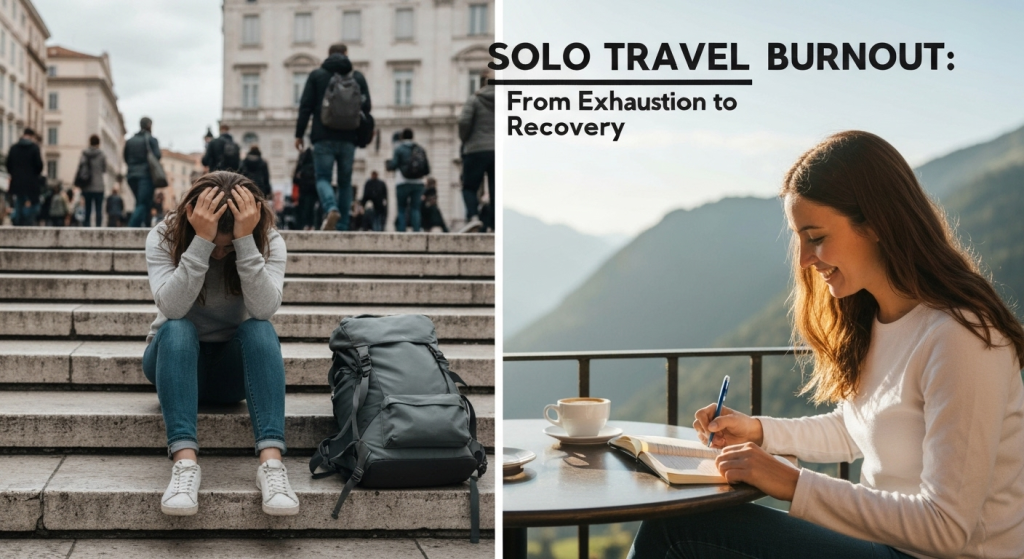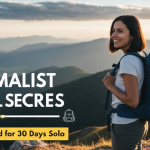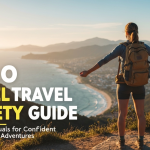Solo travel burnout hits harder than people realize. After five years of exploring over 40 countries alone, I’ve learned to spot the warning signs before they derail my adventures completely.
My name is Mahnoor Farooq, and I’ve been a solo travel expert for half a decade. What started as a gap year adventure turned into a lifestyle that taught me harsh lessons about mental and physical exhaustion on the road. Through countless mistakes, missed flights due to fatigue, and moments of complete overwhelm in foreign cities, I’ve developed a system that keeps me energized and excited about travel.
The truth is, solo travel burnout doesn’t just mean feeling tired. It’s a complex mix of decision fatigue, social isolation, and constant adaptation that can turn your dream trip into a nightmare. But here’s what most travel blogs won’t tell you – recognizing burnout early and having practical recovery strategies can save your entire journey.
What Is Solo Travel Burnout Really
Solo travel burnout goes beyond ordinary tiredness. It’s a state where the constant demands of navigating new places alone overwhelm your mental and physical resources.
During my second year of extended travel, I found myself crying in a Bangkok hostel at 3 AM. I had been moving between countries for eight months straight. Every decision – from choosing restaurants to booking accommodations – fell on my shoulders. The weight of constant choices had crushed my enthusiasm completely.
Travel burnout manifests differently than work burnout. You’re not just dealing with routine stress. You’re processing new languages, cultures, and social norms while making hundreds of micro-decisions daily. Your brain works overtime to adapt, leaving you drained in ways you never expected.
The psychological impact runs deeper than physical exhaustion. You start questioning your travel goals, feeling guilty about not enjoying experiences others dream about, and losing the curiosity that drove you to travel initially.
Key Characteristics of Solo Travel Burnout:
Physical SignsMental SignsEmotional SignsConstant fatigueDecision paralysisIrritabilitySleep disturbancesMemory problemsLonelinessAppetite changesLack of focusAnxietyFrequent illnessPlanning difficultiesDepression
The 7 Warning Signs I Watch For
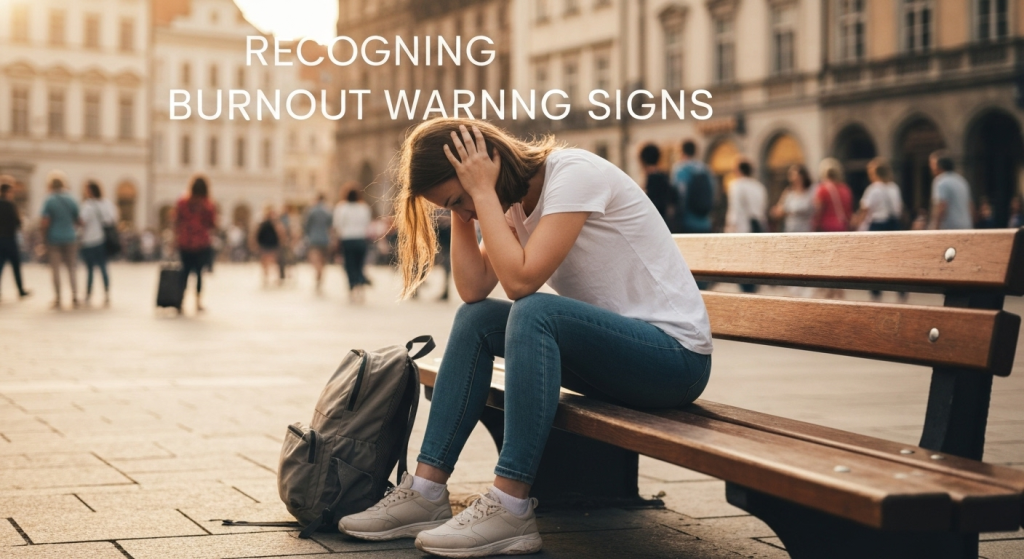
1. Decision Fatigue Becomes Overwhelming
Every choice feels monumental. Should I eat at this restaurant or that one? Take the bus or train? Stay another day or move on? These simple decisions start feeling impossible.
I remember standing in Prague’s main square for 20 minutes, unable to choose between three restaurants. All looked good. All had reasonable prices. But my brain couldn’t process one more choice. That’s when I knew decision fatigue had taken over.
Early Warning Signals:
- Avoiding restaurants with too many menu options
- Booking the first accommodation you find instead of comparing
- Following other travelers’ plans instead of making your own
- Feeling anxious about simple daily choices
2. Social Isolation Feels Heavier Than Usual
Solo travel naturally involves alone time. But burnout makes solitude feel suffocating instead of peaceful. You stop enjoying your own company and crave meaningful connections desperately.
During a particularly tough period in Vietnam, I realized I hadn’t had a real conversation in five days. I was surrounded by people but felt completely invisible. The language barrier, combined with my own withdrawal, created a bubble of loneliness I couldn’t break.
3. Everything Becomes a Chore
Activities you once loved feel like obligations. Museums become tiresome. Local markets feel overwhelming. Even sunset views fail to inspire you.
I knew I was burned out when I skipped the Taj Mahal because walking around “seemed like too much work.” The Taj Mahal! Something I’d dreamed about for years became just another tourist trap I couldn’t muster energy for.
4. Your Sleep Patterns Fall Apart
Burnout disrupts sleep in cruel ways. You’re exhausted but can’t fall asleep. Your mind races through tomorrow’s logistics instead of resting. You wake up tired despite sleeping for hours.
Sleep Disruption Patterns I’ve Experienced:
ProblemHow It Shows UpImpact on TravelRacing thoughtsCan't stop planning next dayMiss experiences due to fatiguePhysical tensionShoulders, neck, jaw painHeadaches during activitiesAnxiety dreamsStress about travel logisticsWake up more tiredTime zone confusionBody clock never adjustsEnergy crashes at wrong times
5. Your Tolerance for Discomfort Disappears
Normal travel inconveniences become major stressors. Delayed trains feel catastrophic. Hostel noise becomes unbearable. Language barriers feel insurmountable.
In Romania, a simple bus delay sent me into complete panic. What should have been a minor inconvenience felt like the end of the world. My resilience had worn thin from months of constant adaptation.
6. You Stop Taking Photos or Journaling
Creative expression dies first when burnout hits. You stop documenting experiences because they don’t feel worth remembering. Your camera stays in your bag. Your journal remains blank.
This hit me hardest in Iceland. I was surrounded by incredible landscapes but felt no urge to capture them. Everything felt gray and meaningless, even the Northern Lights.
7. Home Starts Feeling More Appealing Than Adventure
When familiar comfort outweighs the excitement of discovery, burnout has arrived. You fantasize about your own bed, favorite restaurants, and predictable routines more than new destinations.
I spent an entire day in Barcelona researching flights home instead of exploring Gaudí’s architecture. Home wasn’t calling because I missed it – it was calling because I needed recovery.
My Personal Burnout Recovery System
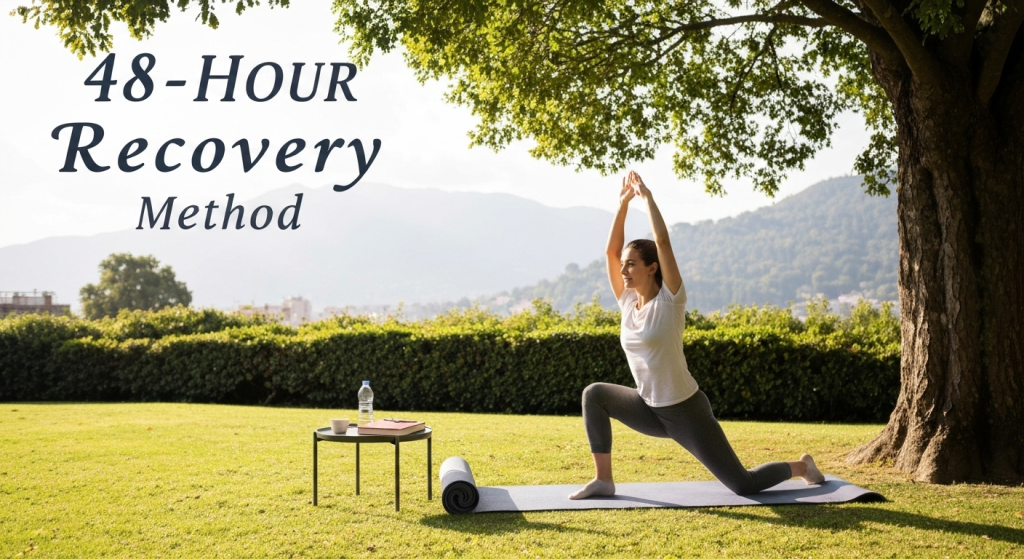
The 48-Hour Reset Method
When I spot burnout warning signs, I implement my 48-hour reset immediately. This isn’t about pushing through or “toughing it out.” It’s about strategic recovery that prevents complete breakdown.
Hour 1-6: Immediate Comfort
- Find the most comfortable accommodation possible, even if it costs more
- Order familiar food that requires no decisions
- Take a long shower or bath
- Sleep without setting alarms
Hour 6-24: Mental Rest
- No planning or decision-making beyond basics
- Avoid social media and travel research
- Watch familiar movies or read light books
- Practice basic self-care routines
Hour 24-48: Gentle Re-engagement
- Take slow walks without destinations
- Visit one low-key attraction if energy allows
- Journal about current feelings without judgment
- Plan only the next 2-3 days maximum
This system saved my three-month European trip. I was completely burned out in Budapest but used these 48 hours to reset. Two days later, I fell in love with Prague’s charm because I had energy to appreciate it.
Creating Micro-Sanctuaries
Micro-sanctuaries are small, familiar rituals you can create anywhere. They provide psychological comfort when everything else feels foreign and overwhelming.
My Essential Micro-Sanctuaries:
- Same breakfast routine: coffee, fruit, and journaling for 30 minutes
- Evening tea ritual with calming music on headphones
- Morning stretches in my room before facing the day
- Weekly video calls home on the same day and time
These tiny familiarities anchor you when the world feels too big and unpredictable.
The Slow Travel Prescription
Speed kills enjoyment during burnout recovery. Instead of rushing between destinations, I force myself to stay put longer than planned.
My rule: If I’m burned out, I stay in the current city at least three extra days. This gives my nervous system time to adapt and my decision-making capacity to recover.
In Athens, this rule saved my entire Greece experience. Instead of rushing to the islands as planned, I spent a full week exploring different neighborhoods slowly. By day four, my enthusiasm had returned completely.
Benefits of Slow Travel During Recovery:
AspectHow It HelpsPractical ResultAccommodationNegotiate weekly ratesSave money and energyRoutineEstablish familiar patternsReduce daily decisionsExplorationDeeper understandingMore meaningful experiencesRestNatural recovery timeEnergy for enjoyment
Social Connection Strategies
Fighting isolation requires intentional effort, especially when you feel least social. I’ve developed specific strategies that work even for introverts experiencing burnout.
Low-Energy Social Connection Methods:
- Join group walking tours (no pressure to initiate conversation)
- Attend cooking classes (shared activity breaks ice naturally)
- Work from cafes instead of staying in room
- Use apps like Meetup for structured social activities
The key is choosing social activities that don’t require you to perform or entertain others. Let the structure of the activity carry the social interaction.
Digital Detox Without Complete Disconnection
Total digital detox isn’t practical during solo travel. You need maps, translation apps, and communication tools. But strategic digital boundaries help enormously.
My Digital Burnout Protocol:
- No social media scrolling for 72 hours
- Turn off all non-essential notifications
- Use airplane mode during meals and evening hours
- Limit travel research to 30 minutes daily maximum
This selective approach lets you stay safe and connected while giving your brain the rest it needs from constant digital stimulation.
Prevention Strategies That Actually Work
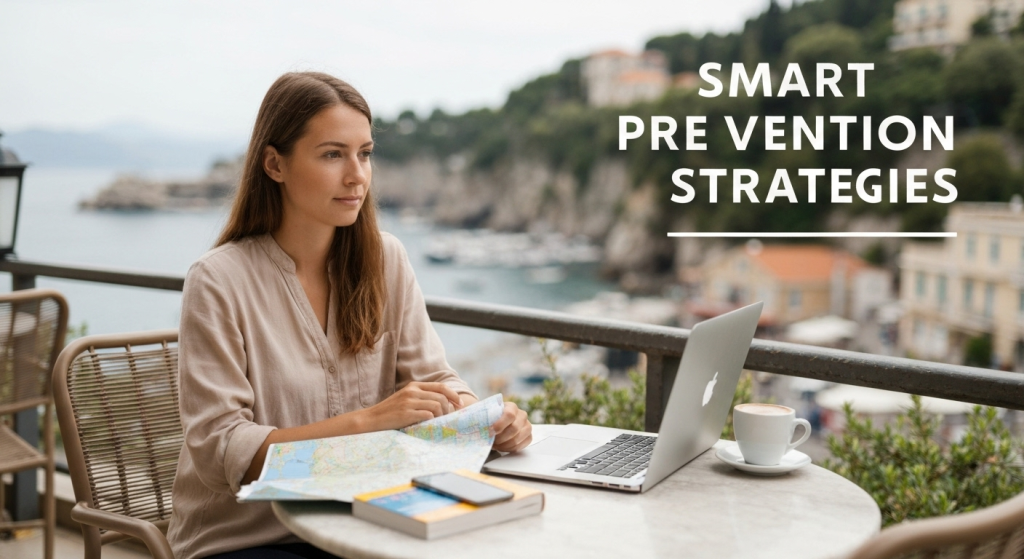
Building Buffer Days Into Itineraries
The biggest mistake I made early on was packing schedules too tightly. Now I intentionally plan buffer days – time with no agenda except rest and spontaneous exploration.
For every week of active travel, I schedule at least one full buffer day. These aren’t wasted days; they’re investment days that keep burnout at bay.
Buffer Day Activities:
- Sleep late without guilt
- Explore one neighborhood thoroughly instead of rushing around
- Have a long lunch at a sidewalk cafe
- Do laundry and reorganize gear
- Plan the next leg of travel calmly
Energy Management Over Time Management
Traditional productivity advice focuses on time management. Solo travel requires energy management instead. Your energy – mental, physical, and emotional – becomes your most precious resource.
Energy Audit Questions I Ask Weekly:
- What activities drain me most?
- When do I feel most energized during the day?
- Which decisions can I eliminate or automate?
- How much social interaction do I need versus alone time?
Answering these honestly helps you structure travel in ways that sustain rather than deplete you.
Creating Travel Rhythms
Rhythms provide structure without rigid schedules. They create predictability in unpredictable environments, reducing the constant adaptation stress that causes burnout.
My Current Travel Rhythm:
- Mornings: Coffee, journaling, light planning
- Midday: One main activity or exploration
- Afternoon: Rest, reading, or gentle walking
- Evening: Dinner, reflection, preparation for tomorrow
This rhythm adapts to any location while providing consistent anchoring points throughout each day.
Common Recovery Mistakes to Avoid
Pushing Through “Just This Once”
The biggest mistake is ignoring early warning signs because you don’t want to “waste” travel time. I’ve learned that two days of rest prevents two weeks of complete burnout.
When I felt exhausted in Istanbul but pushed myself to see “just one more mosque,” I ended up spending three days in bed with stress-induced illness. Those two rest days I avoided cost me much more time ultimately.
Comparing Your Recovery to Others
Other travelers might seem tireless and energetic. Don’t measure your recovery needs against theirs. Everyone has different tolerance levels and coping mechanisms.
During my burnout period in Southeast Asia, I met travelers who seemed to thrive on chaos and constant movement. Trying to match their pace made my exhaustion worse. Accepting my own needs was crucial for recovery.
Expecting Immediate Results
Recovery takes time. Don’t expect to feel completely refreshed after one good night’s sleep. Real recovery from solo travel burnout requires patience and consistent self-care.
Realistic Recovery Timeline:
Recovery StageDurationWhat to ExpectImmediate Relief1-2 daysBasic needs met, initial restStabilization3-7 daysSleep improves, decision-making easierRenewed Interest1-2 weeksCuriosity returns, activities feel enjoyableFull Recovery2-4 weeksEnergy and enthusiasm fully restored
Avoiding Professional Help When Needed
Sometimes burnout indicates deeper issues that require professional support. Don’t hesitate to seek help from therapists who offer online sessions or medical professionals if physical symptoms persist.
I consulted a travel therapist during a particularly difficult period in South America. Having someone understand both travel challenges and mental health made an enormous difference in my recovery and future travel planning.
Building Long-Term Resilience
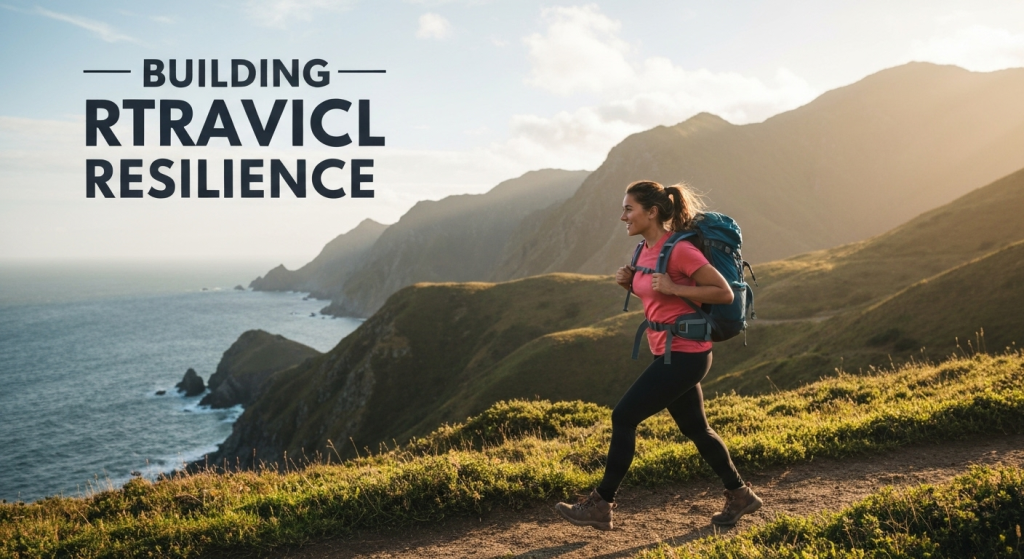
Developing Your Personal Early Warning System
Learn your specific burnout patterns. What triggers exhaustion for you? Which situations drain your energy fastest? How does your body signal when you need rest?
My Personal Warning System:
- Physical: Tension headaches, poor sleep
- Mental: Can’t make simple decisions, forget important details
- Emotional: Irritability with minor inconveniences, homesickness
- Behavioral: Stop taking photos, avoid social interaction
Document your patterns so you can intervene early during future travels.
Creating Sustainable Travel Practices
Sustainable solo travel means balancing challenge with comfort, adventure with rest, independence with connection. It’s about traveling in ways you can maintain long-term without burning out.
Sustainable Practice Examples:
- Mix budget and comfortable accommodations
- Alternate intense travel periods with slower exploration
- Maintain some routines from home life
- Build relationships with other long-term travelers
- Set realistic expectations for daily activities
Investment in Recovery Tools
Quality recovery tools are worth the extra weight and cost. They provide comfort and familiarity when everything else feels foreign.
My Essential Recovery Kit:
- Comfortable travel pillow and light blanket
- Noise-canceling headphones for mental space
- Herbal teas for evening routines
- Essential oils for familiar scents
- Comfortable pajamas for proper rest
These items create instant comfort zones wherever you are, making recovery faster and more effective.
FAQs
How long does it take to recover from solo travel burnout? Recovery typically takes 2-4 weeks of intentional rest and self-care. Mild burnout might resolve in a few days, while severe burnout can require a month or more of reduced activity and careful energy management.
Can I prevent burnout completely? You can significantly reduce burnout risk through proper planning, energy management, and early intervention, but some level of travel fatigue is normal. The goal is managing it before it becomes overwhelming.
Should I go home if I’m experiencing severe burnout? Not necessarily. Often, slowing down and implementing recovery strategies in your current location works better than the stress of traveling home. However, if burnout affects your safety or mental health severely, returning home temporarily might be necessary.
How do I know if it’s burnout or just normal travel tiredness? Normal tiredness improves with rest and doesn’t affect your overall enjoyment of travel. Burnout persists despite rest, affects decision-making, and makes activities you normally enjoy feel like burdens.
Conclusion
Solo travel burnout isn’t a failure – it’s a signal that you need better strategies for sustainable adventure. Recognizing the warning signs early and having practical recovery methods transforms potential travel disasters into minor course corrections.
My five years of solo travel taught me that prevention and early intervention work far better than pushing through exhaustion. The travelers who seem effortlessly energetic aren’t superhuman; they’ve learned to manage their energy wisely and recover effectively when needed.
The goal isn’t to eliminate all challenges from solo travel. Challenges create growth and memorable experiences. The goal is developing resilience and recovery skills that let you handle whatever comes your way without sacrificing your mental health or travel dreams.
Remember, taking care of yourself isn’t selfish – it’s essential for sustainable solo travel. Your future adventures depend on the recovery choices you make today.

